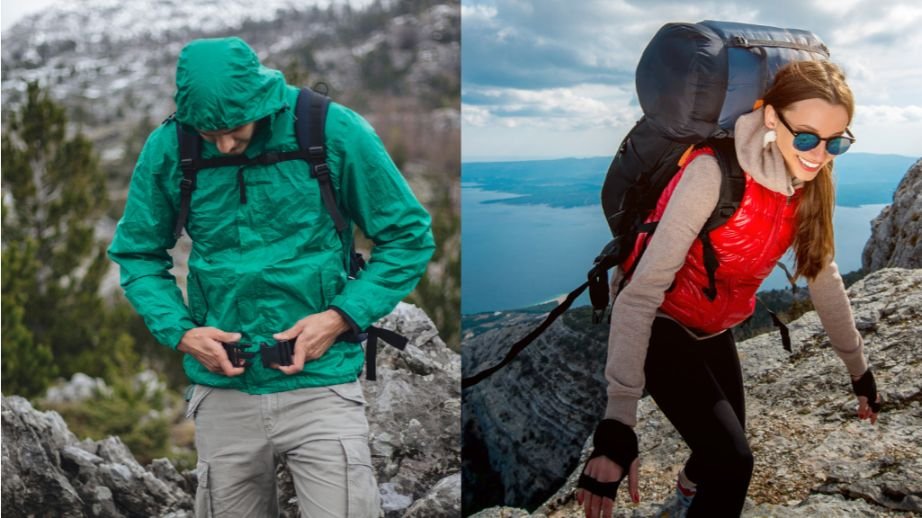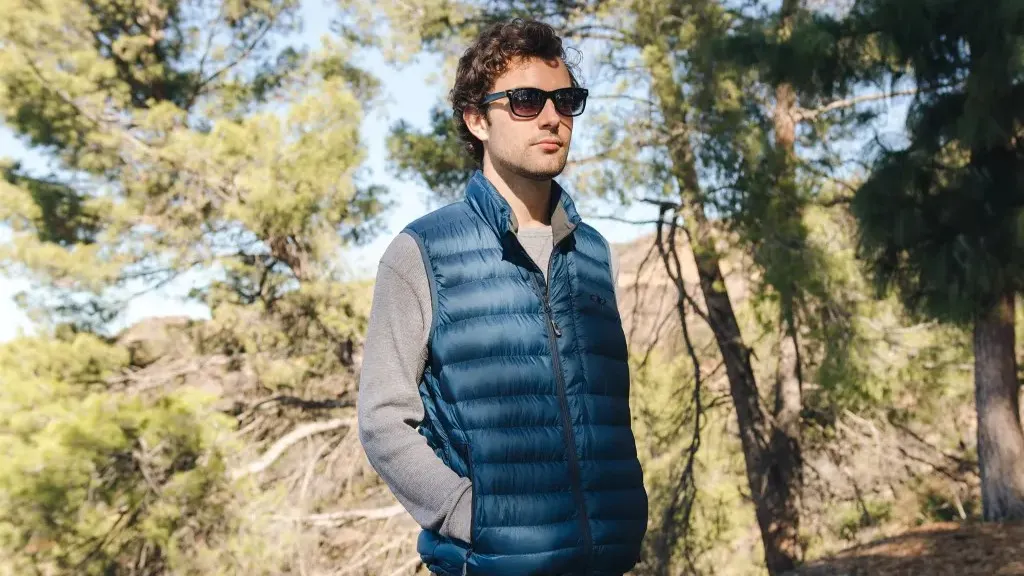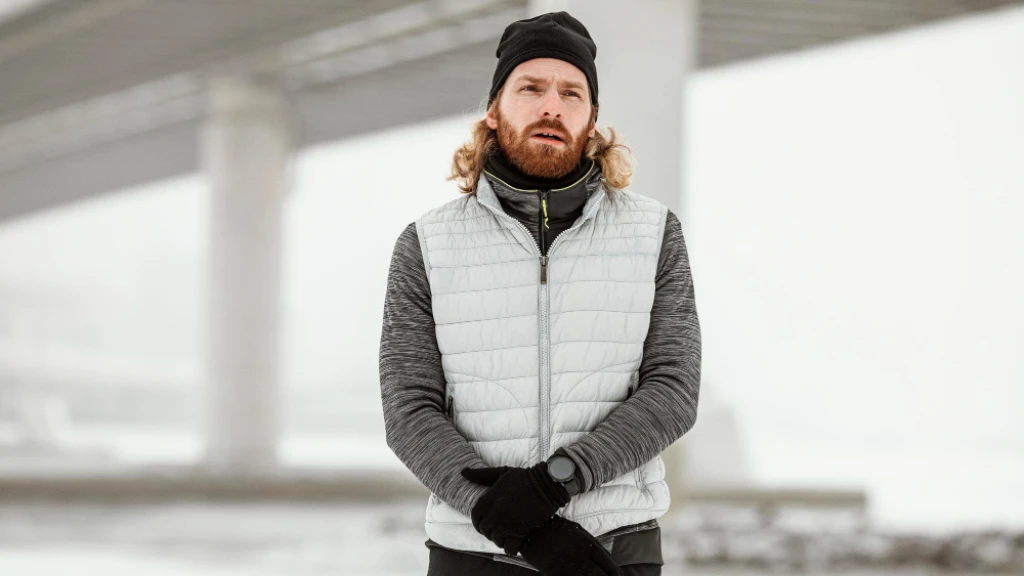I get a lot of questions about what to choose for a hike – a vest or a jacket? If you’re looking for a clear-cut winner, I’m afraid I’d be doing you a disservice. The truth is, you need both in your hiking wardrobe.
But don’t worry, I won’t leave you hanging with just that. In this article, I’ll dive deep into the nitty-gritty of vests vs. jackets for hiking. We’ll explore the ins and outs of each, from their unique benefits to the specific scenarios where they each become your best choice on the trail.
The Warmth and Freedom of Vests
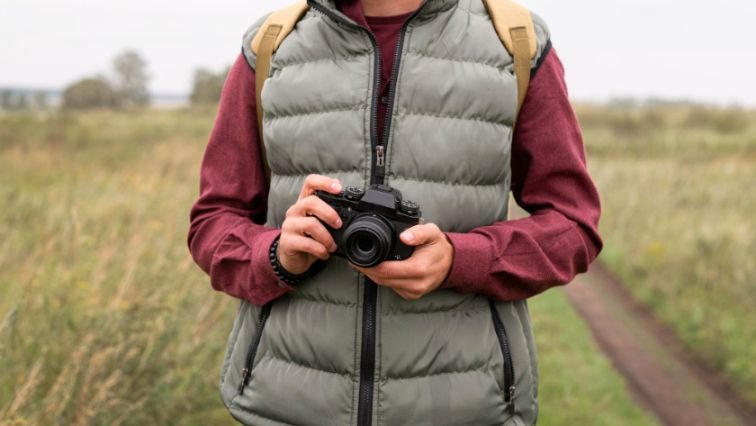
Core Temperature Mastery
Vests are these amazing pieces that hit the sweet spot in temperature control. They keep your core snug and warm, which is crucial because your core is your body’s thermostat. Once your core gets cold, the rest is history.
When your core is at that perfect temp of ~98.6°F, your body runs like a well-oiled machine. You can hike longer, climb higher, and push further without feeling like you’re battling the elements in your own clothes.
So, how do vests pull off this magic trick? It’s all about mobility and air circulation. Without sleeves, vests allow your sweat to evaporate and keep air moving around your body. This stops you from overheating on steep climbs but keeps you warm enough during chilly summit breaks.
Light as a Feather
If there’s one thing I’ve learned, it’s the importance of traveling light. I used to pack heavy jackets “just in case” and ended up sweating or carrying them around. Then, I discovered hiking vests.
On average, vests weigh between 7-10 ounces. Jackets, on the other hand, tip the scales at about 11-16 ounces. That might not sound like a lot but on a long hike, every ounce counts. It’s like choosing between carrying an extra water bottle or a couple of energy bars.
Now, I’m not saying jackets don’t have their place. They’re great for certain conditions. But for those days when the weather is on your side, a vest is like wearing a badge of freedom. You get the warmth where you need it, around your core, without the bulk slowing you down.
Next time you’re packing for a hike, ask yourself, “Do I really need that heavy jacket, or can a vest do the job?” You’ll feel the difference on your shoulders (and legs) miles down the trail.
The Art of Layering
By wearing a vest over your base layer and under your outer shell, you create a warm yet breathable microclimate.
Let’s say you’ve got your base layer on, and then there’s the vest, snug and keeping your core warm. That’s your mid-layer at work.G
But then, the sun decides to join the party, and it gets a bit warmer. What do you do? Easy. You shed your outer layer (if you have one on) and let the vest take center stage as your outer layer. Just like that, you’ve adapted to the weather without having to carry extra weight or bulk around.
The All-Round Protection of Jackets
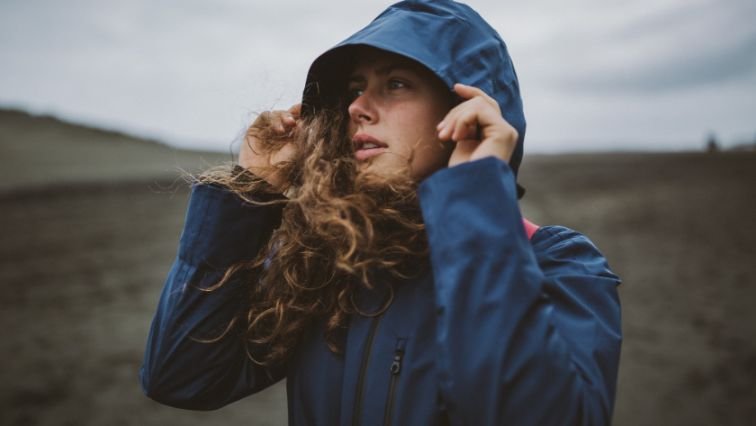
Waterproofing and Breathability
It’s easy to underestimate the power of a good waterproof and breathable jacket until you’re caught in a relentless downpour. What you want to look for are waterproof jackets with breathability ratings over 20,000 mm.
A jacket with this breathability rating means it’s designed to keep water out while allowing sweat to evaporate. This is critical because what’s the point of staying dry from the rain if you’re going to end up soaked in sweat? It’s about finding that sweet spot where protection meets comfort.
Unmatched Warmth for Minimal Weight
Hiking jackets, especially down jackets, are designed to provide maximum warmth without the added weight. This is important for hikers as, again, every ounce counts when you’re carrying all your gear on your back.
It all boils down to their fill power. This might sound like shop talk but understanding this term can change your cold-weather adventures for the better.
Fill power measures the loft or “fluffiness” of the down used in the jacket, which directly relates to its ability to trap heat. The higher the fill power, the better the insulation with less bulk.
Some of the best hiking jackets have a fill power of 800+, which means they provide excellent warmth while still being lightweight.
One of the best parts? The minimal bulk. These jackets are still heavier than hiking vests, but what I like about them is that they compress down so small they can fit in the bottom of your pack, taking up no more space than a water bottle. This means more room for snacks (a very high priority, if you ask me).
Versatility with Added Features
Let me introduce you to my personal favorite feature: pit zips. These are zippers under the arms of your jacket. Sounds simple, but do they make a difference! On a climb last spring in the Smokies, the morning started off chilly, but by midday, it felt like summer. Normally, I’d be stopping to awkwardly shed layers, but with a quick zip, I cooled down without missing a beat.
What about vests? Aren’t they versatile too? Absolutely, vests have their place. They keep your core warm while letting your arms breathe. But when the wind picks up or the temperature really drops, your arms are going to miss the warmth.
Jackets, especially those with pit zips and other features, give you the best of both worlds. You can adjust on the fly without sacrificing protection.
Choosing Your Feature-Rich Jacket
When you’re on the hunt for that perfect jacket, consider what matters most for your adventures:
- Pit Zips: For those who heat up quickly, these are a lifesaver.
- Adjustable Hoods: Because getting slapped by your hood in the wind isn’t fun.
- Waterproof Pockets: Keeping your gear dry is always a priority.
Vests vs. Jackets: The Ultimate Comparison
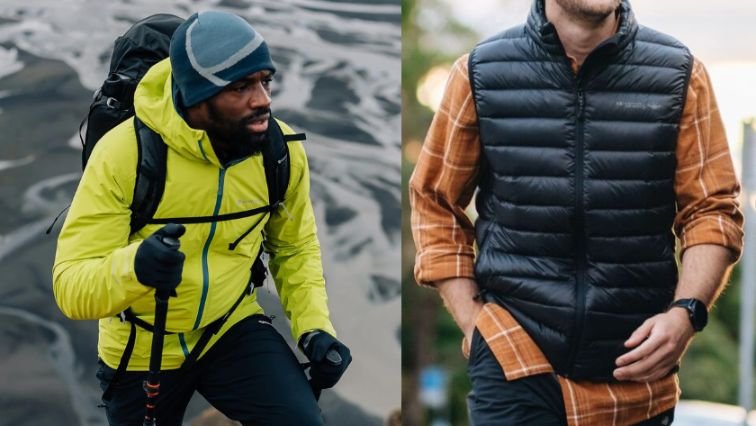
Core Temperature Management
Keeping your core at a happy medium is like hitting the sweet spot where you’re not too hot, not too cold, but just right.
Vests are fantastic for when you’re moving and grooving, and here’s why:
- Freedom of Movement: Your arms can move freely, making steep climbs feel a tad less daunting.
- Air Circulation: With your arms out, you get more air flowing around your body, helping to keep the sweat at bay.
Jackets have their place too. When the wind picks up, or you’re faced with a sudden drop in temperature, a jacket can be a good choice.
- Wind Protection: A solid jacket acts like a shield against chilly gusts.
- Extra Warmth: For those cooler starts or when the sun decides to call it a day, having sleeves can make all the difference.
I’ve had days where the weather forecast should’ve come with a plot twist warning. Times like these, I was grateful for my jacket’s warmth and protection.
Verdict: Vests Win
Vests may not be as popular as jackets, but they definitely hold their own in the core temperature management game.
Weight Efficiency
When it comes to cutting down on weight without sacrificing warmth and protection, vests are your go-to. Here’s why:
- Less Material, Less Weight: It’s pretty straightforward – vests use less fabric than jackets. This means they naturally weigh less, making them a fantastic option for those looking to shave off some weight from their packs.
- Packability: Vests tend to be more compact. You can easily stuff one into your pack without it taking up much space or adding unnecessary weight.
But I’m not here to throw jackets under the bus. They have their place, especially in colder conditions or when you need extra protection from the elements. But when it comes to weight efficiency, they usually tip the scales a bit more than vests.
- More Fabric, More Weight: Jackets come with sleeves, and sometimes additional lining or insulation, which adds extra weight.
- Bulkier to Pack: Jackets can take up more room in your pack, which might force you to leave something else behind or carry a larger, heavier pack.
Verdict: Vests Win Again
Overall, it’s clear that vests have a lot going for them in terms of weight efficiency.
Protection Against the Elements
Jackets stand as your first line of defense against the harshness of nature. They’re warding off the rain, blocking the wind, and sometimes even keeping you safe from the snow.
- Rain: Think about walking through the Scottish Highlands, where rain is more of a constant companion than a possibility. A jacket with a waterproof membrane (look for terms like Gore-Tex or eVent) becomes indispensable.
- Wind: Ever stood on the summit of a mountain, feeling the gusts trying to knock you over? Here, a windbreaker jacket can be a game-changer. It cuts down the chill factor significantly, allowing you to enjoy that view a bit longer.
- Insulation: On cold mornings, a well-insulated jacket provides cozy warmth, making those early starts bearable. The key here is to look for jackets with synthetic fill or down insulation but remember, down struggles when wet.
Hiking vests might seem like the underdog here, but they do offer some protection against the elements. They can act as a wind barrier, and some even come with water-resistant coatings. However, they don’t provide the same level of coverage or insulation as jackets.
Verdict: Jackets Take the Lead
While vests may have their advantages, when it comes to protection against the elements, jackets take the lead. Their superior coverage and insulation abilities make them a more reliable choice in unpredictable weather conditions.
Warmth-to-Weight Ratio
Jackets, especially those filled with down, are the champions here. They’re unbeatable when it comes to providing warmth without adding unnecessary weight to your load.
Down jackets are filled with the fluffy undercoating from ducks or geese. This material traps heat incredibly well, which is why down jackets offer the best warmth-to-weight ratio. But there’s a catch – they don’t do well in wet conditions unless they’re treated with a water-resistant coating. That’s a vital piece of info you won’t find just anywhere.
Where do vests fit into this picture? Vests are fantastic for active periods when you’re moving fast and generating a lot of body heat.
But while vests are lighter than jackets, they don’t provide the same level of overall warmth. They’re best used in milder conditions or as a layering piece under a light jacket. Think of vests as your go-to for crisp autumn hikes rather than the dead of winter.
Verdict: Jackets Win
Jackets are the clear winner here. Their efficient use of down filling provides maximum insulation without weighing you down. Vests may have their uses, but when it comes to staying warm in cold weather, jackets take the prize.
Versatility and Layering
Vests are like chameleons. They fit right in under a heavier jacket when the mercury drops, trapping heat where you need it most – around your vital organs. But they’re not just for cold weather. On a brisk fall hike, they pair perfectly with a long-sleeve shirt.
And when the sun decides to grace you with its presence, a vest becomes the ideal outer layer. It shields your core while letting your arms breathe, preventing that awkward hiker’s sauna situation.
Verdict: Vests Win
Jackets are great as they offer full coverage and can be a godsend in truly cold conditions. But if we’re talking versatility and ease of movement, vests have an edge. They allow you to layer up or down without feeling like you’re trapped in a fabric prison.
Conclusion
Locking yourself into the “vests only” or “jackets only” club is a big mistake. You’re setting yourself up to miss out on the joys (and comforts) that the other side offers.
Personally, I might lean a bit more towards vests for their unbeatable lightness. But when the weather is unpredictable, I’m the first to reach for my hiking jacket, grateful for its warm embrace.
Think of them as tools in your hiking arsenal. You wouldn’t use a hammer to screw in a bolt, right? Same logic applies here. My advice? Rotate between vests and jackets based on the conditions you expect to face and you’ll be a much happier hiker!

Lukas Heller
Hey there! I’m Lukas, co-founder of BigfootHiking.com, alongside my adventurous wife Martha. Originally from Germany, I landed in Phoenix, Arizona, in 2015, where I’ve been scouting out new trails ever since (though they’re getting scarce!). By day, I’m a software developer, but my heart belongs to hiking – I’m always plotting our next trip. When I’m not coding or on the trails, you’ll find me hanging out with our Pit Bull, Zeus.

